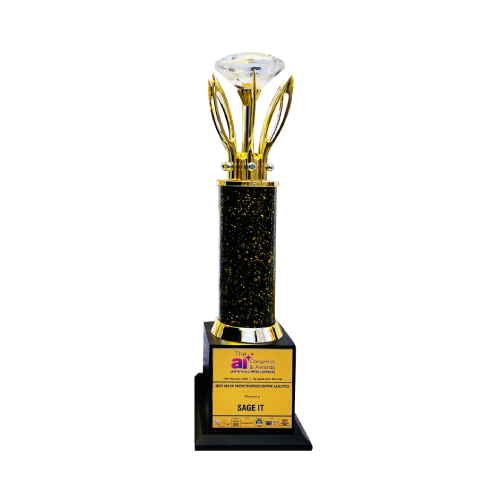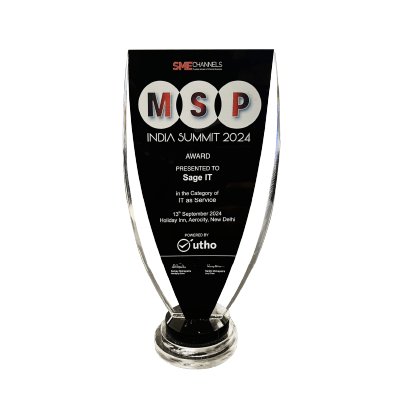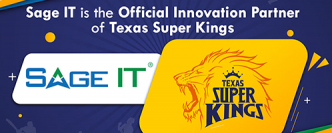In recent years, there has been an increase in hyperautomation—the process of automating and optimizing corporate operations by merging cutting-edge technologies like robotic process automation (RPA), machine learning (ML), artificial intelligence (AI), and more.
In recent years, there has been an increase in hyperautomation—the process of automating and optimizing corporate operations by merging cutting-edge technologies like robotic process automation (RPA), machine learning (ML), artificial intelligence (AI), and more. Hyperautomation is expected to become the main focus in 2024 as businesses from all sectors look for creative methods to boost productivity, save expenses, and maintain their competitiveness in the digital age. The top ten hyperautomation trends for 2024 will be discussed in this article.
1.AI-Driven Process Discovery
AI-powered process discovery is a game-changer in the hyperautomation space. It entails analyzing and comprehending current business processes inside an organization using cutting-edge machine learning algorithms. It finds bottlenecks, redundancies, and areas where automation can be most helpful by doing this. This technology has the power to completely change how businesses approach their efforts to go digital.
Organizations may move away from laborious, manual process mapping processes with AI-driven process discovery. Alternatively, they can swiftly and precisely obtain insights into their operations by utilizing AI’s power. This guarantees that automation efforts are focused on the procedures that will produce the biggest returns while simultaneously saving time.
Furthermore, process discovery powered by AI is an ongoing endeavor. It is a dynamic tool for continuous process optimization since it may modify and adapt to the demands of business operations. We anticipate that more businesses will be implementing this technology in 2024 to improve productivity, optimize automation projects, and increase investment returns.
2.Democratization of Automation
Making automation available to more people inside a company than simply IT specialists or developers is the key to democratizing automation. This trend will pick up even more steam in 2024 as companies realize they need to provide staff members the resources they need to develop and implement their automation solutions.
Platforms that require little or no programming will lead this trend. These platforms enable corporate users to create, develop, and deploy automated processes with minimal or no coding skills thanks to their user-friendly interfaces. This change in strategy fosters creativity at all organizational levels while also quickening the automation process.
Leveraging hyperautomation solutions not only democratizes automation but also reduces the backlog of IT requests, promotes cooperation between business and IT teams, and empowers subject matter experts to spearhead automation initiatives. Because business users may react swiftly to shifting demands or market situations, it also fosters agility.
Organizations may use the creativity and collective intelligence of their employees by democratizing automation, which will result in more competitive and dynamic business environments and more efficient operations.
3.Hyperautomation in Customer Service
In 2024, hyperautomation is going to change customer service by utilizing AI-powered tools and technology to improve interactions with customers. Natural language processing (NLP), chatbots, and virtual assistants are being used to deliver assistance more quickly and individually.
For instance, common client inquiries can be handled by AI-driven chatbots around the clock, speeding up response times and lightening the workload for human customer support representatives. NLP can also be used by these chatbots to better comprehend client inquiries and provide responses that are more contextually appropriate.
However, chatbots aren’t the only example of hyperautomation in customer support. It includes automating several processes related to the customer journey, such as appointment scheduling and employing predictive analytics to anticipate needs. In addition to raising customer happiness, this proactive approach to customer care promotes client loyalty and retention.
To remain competitive in the market, customer service teams should anticipate significant investments in hyperautomation technology by 2024. Businesses that embrace hyperautomation in customer service will be better positioned to deliver extraordinary experiences and create enduring relationships with their clients as customers’ demands rise.
4.Hyperautomation for Cybersecurity
Cybersecurity will grow more intricate due to the ongoing evolution of cyber threats. One key trend in resolving these issues is hyperautomation. To identify and address risks instantly, organizations are using AI and ML in their security processes.
Massive amounts of data, such as system logs, network traffic, and user behavior, can be analyzed by AI-driven cybersecurity systems to find trends that could be signs of security vulnerabilities. These systems can automatically react to abnormalities by blocking suspicious activity or isolating infected devices.
This method drastically cuts down on the time needed to detect and neutralize threats, which is important given how quickly the cyber world is changing these days. Additionally, enterprises can strengthen their defenses and overcome the scarcity of qualified cybersecurity personnel by implementing hyperautomation in cybersecurity.
To keep systems safe from new threats, automation can also be used for vulnerability assessments, patch management, and security policy enforcement. Organizations that use hyperautomation for cybersecurity will be better positioned to safeguard their data, systems, and reputation in 2024 and beyond as cybercriminals become more skilled.
5.Integration of IoT and Hyperautomation
The convergence of hyperautomation with the Internet of Things (IoT) in 2024 will propel breakthroughs across a range of industries. Due to their sensors and connectivity, Internet of Things devices produce enormous volumes of data. Hyperautomation uses this data to make decisions and streamline procedures. In the industrial industry, for example, IoT sensors installed on machinery can gather data on equipment performance in real-time, which hyperautomation systems can then evaluate to forecast maintenance requirements and initiate automated maintenance procedures. IoT-enabled agricultural sensors keep an eye on the state of the soil, allowing for automated fertilizer and irrigation adjustments. This integration minimizes human intervention, lowers expenses, and increases operational efficiency.
6.Hyperautomation for Supply Chain Management
By 2024, supply chain management will have undergone a hyperautomation revolution. Automation is being used by businesses more and more to optimize several areas of the supply chain. This covers automated inventory control, real-time data analysis for logistics optimization, and demand forecasting with AI algorithms. Hyperautomation enables businesses to decrease surplus inventory, lower transportation costs, and react to demand swings more quickly. As automated technologies offer real-time tracking and reporting, supply chain visibility also gets better, improving customer service and decision-making. Supply chains will be more flexible and sensitive to shifting market conditions thanks to this trend.
7.Hyperautomation for Compliance and Regulatory Reporting
Hyperautomation is expected to transform regulatory reporting and compliance in 2024. Numerous sectors are encumbered by intricate laws necessitating rigorous data gathering and reporting. Hyperautomation systems use artificial intelligence (AI) and data analytics to automate these procedures, minimizing human error and effort while guaranteeing compliance with regulations. AI algorithms, for instance, may monitor transactions in real-time in the financial services industry, identifying potentially suspicious activity and automatically producing compliance reports. Automated technologies in the healthcare industry make sure that patient data is handled legally and privately. This trend lowers the risk of non-compliance penalties, streamlines regulatory compliance, and frees up valuable human resources for other strategic duties.
8.Hyperautomation in Healthcare
In 2024, hyperautomation will bring about a revolutionary change in the healthcare industry. Automation technologies are improving patient care and optimizing administrative procedures. Examples of these technologies include AI-powered electronic health record (EHR) systems, diagnostic tools, and patient communication platforms. Patient record-keeping is automated by EHR systems, guaranteeing data accessibility and accuracy. AI-powered diagnostics help medical practitioners diagnose patients quickly and accurately, and automated communication systems interact with patients to schedule appointments, remind them to take their medications, and provide post-care follow-ups. These hyperautomation solutions increase patient satisfaction overall, boost healthcare provider administrative burdens, and increase healthcare efficiency.
9.Sustainable Hyperautomation
Industry-wide concern over sustainability is growing, and in 2024, hyperautomation will be essential to promoting eco-friendly behavior. The goal of sustainable hyperautomation is process optimization with the least amount of energy and environmental effect possible. For example, companies will look for automation solutions that make use of low-energy consumption algorithms and energy-efficient hardware. Businesses will also track and lower their carbon footprint through automation projects by integrating sustainability data into their automation strategy. This trend makes hyperautomation a sustainable corporate strategy in addition to an efficiency enhancer, as it is in line with international initiatives to mitigate climate change and lessen environmental harm.
10.Continuous Learning and Adaptation
In 2024, hyperautomation will be defined by ongoing learning and adaptation. Automation systems won’t be static; instead, they will change in real time in response to performance evaluations and data analysis. Algorithms powered by AI and ML will continuously monitor processes to spot inefficiencies and areas for development. They will dynamically modify automation procedures to maximize resource allocation, accuracy, and efficiency. Automation solutions are certain to stay effective in a corporate environment that is changing quickly thanks to this ongoing learning and adaption. Hyperautomation becomes an ongoing strategic need rather than a one-time initiative because it enables firms to remain competitive, adapt to changes in the market, and maintain peak operational performance.
Conclusion
As 2024 approaches, hyperautomation is a key factor influencing how businesses operate in the future. These ten hyperautomation trends are the blueprints for success in the digital age, not just fads that come and go. Organizations have a multitude of options to improve customer experiences, expedite operations, and remain competitive in a fast-changing market, ranging from democratizing automation and supporting sustainability to utilizing AI-driven insights.
The most important lesson is that hyperautomation is now a strategic must rather than a choice. Companies that embrace these trends and see their potential will not only survive but prosper. They will become more competitive, increase productivity, cut expenses, and adapt quickly to changing client demands.
In conclusion, enterprises must constantly learn, adapt, and innovate as they proceed along the hyperautomation journey. By doing this, they will be able to ensure a better, more automated future in which they will be leading the way toward a world that is automated and digitally changed rather than merely keeping up with the times.













